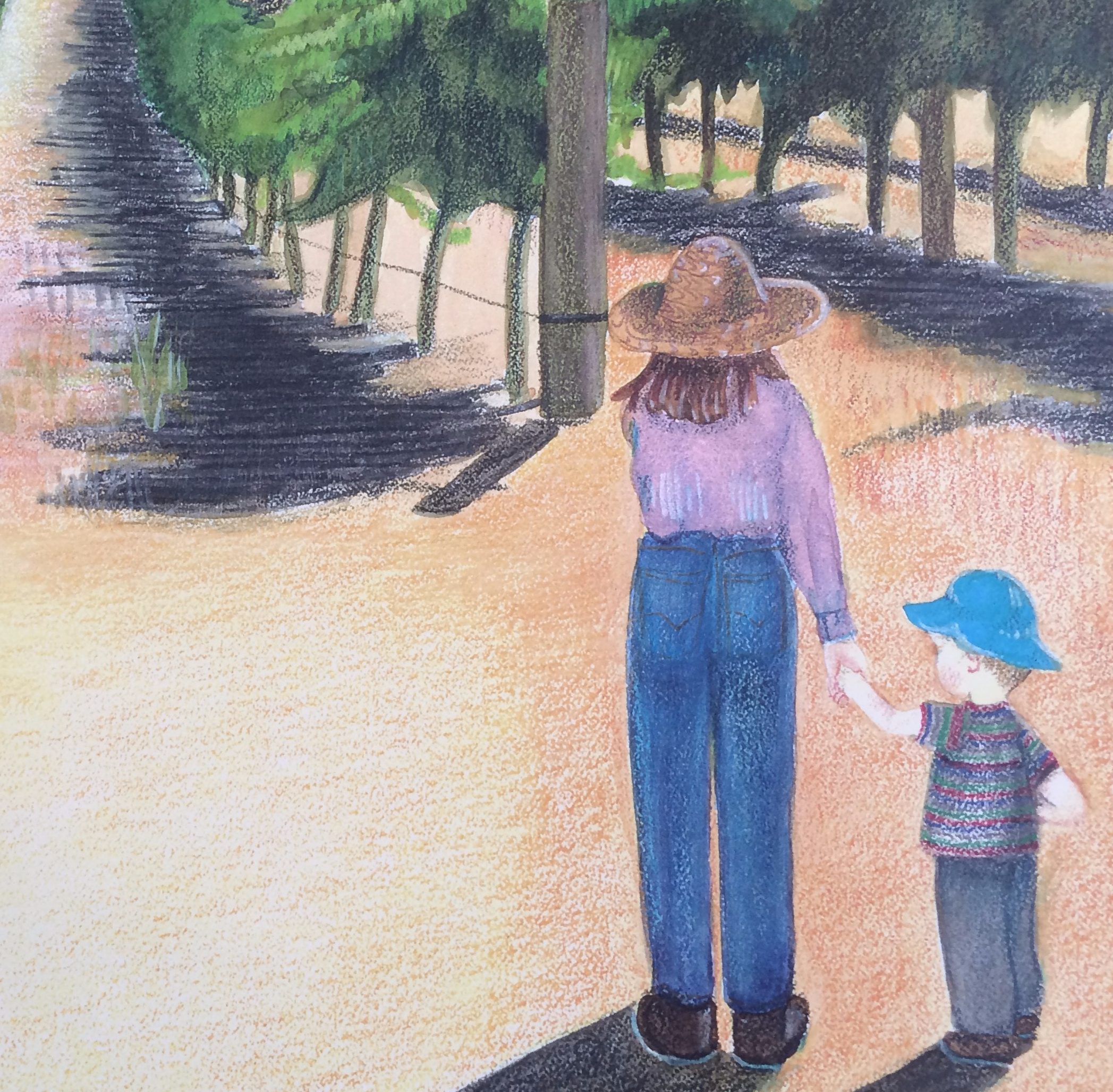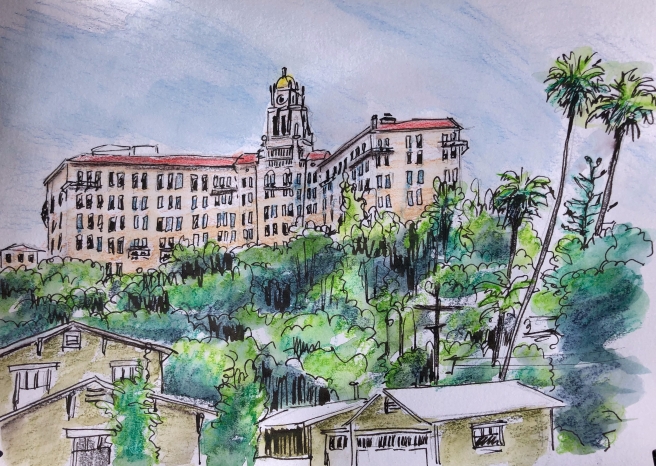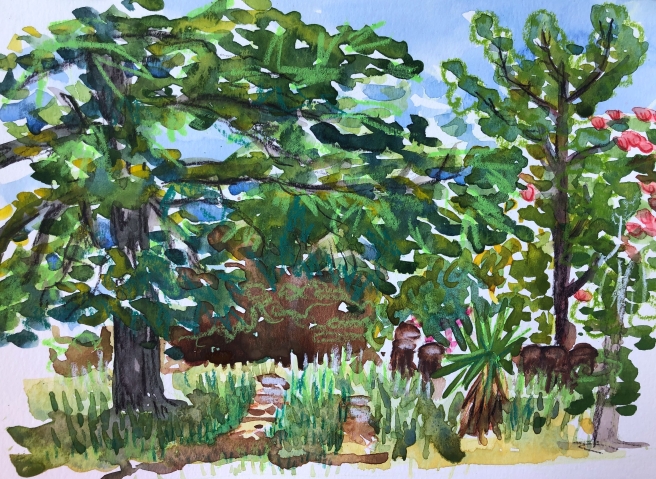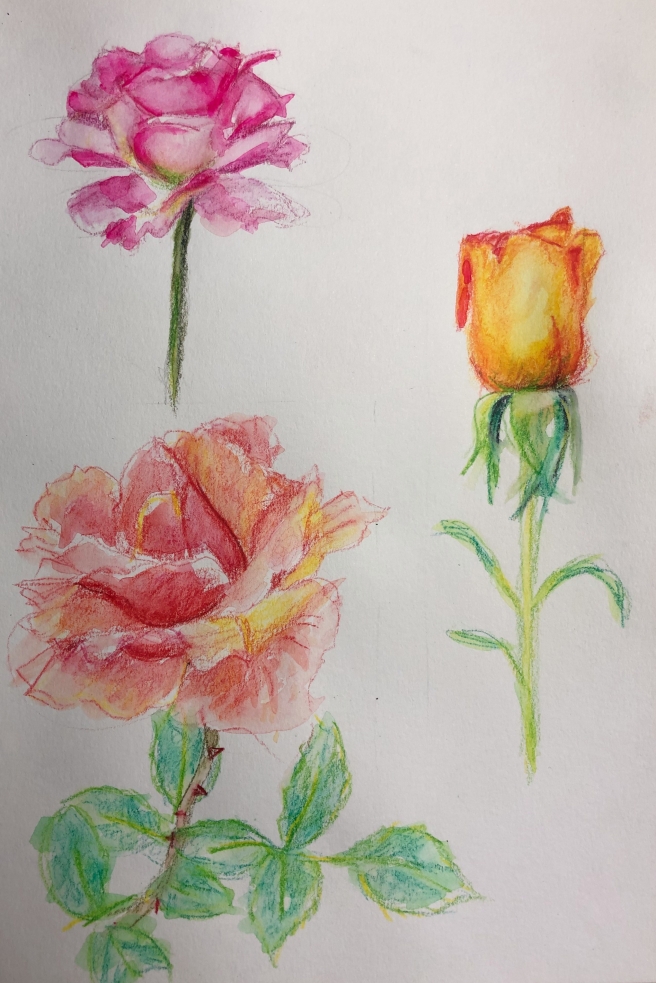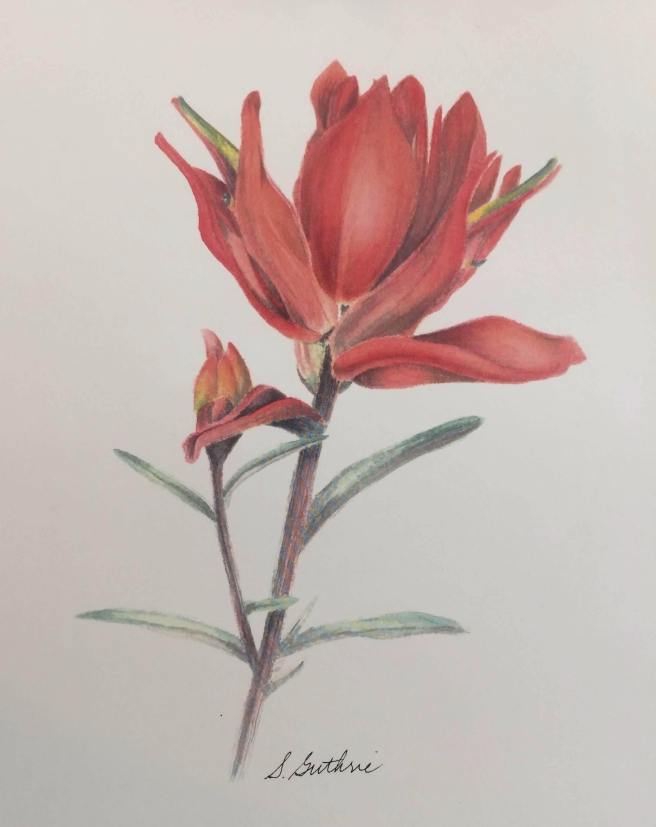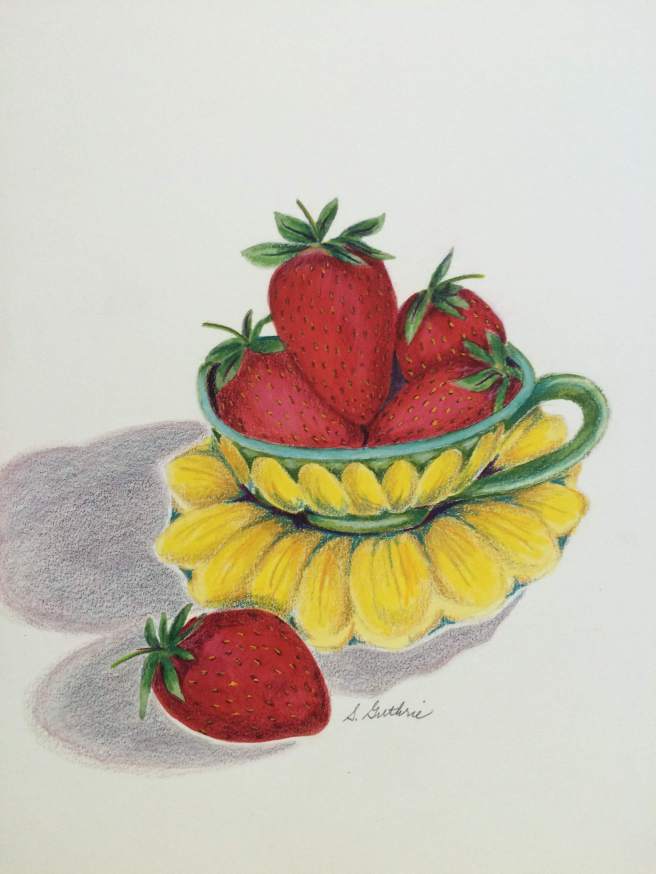
Not exactly sure when I did this one, but I think it was 2001. I had planned to write a story to go with it and send it to a local San Luis Obispo magazine. It must have been around this time of year as that is when strawberries are in season, really in season. It sometimes seems strawberries are in season year round here in CA, but if you Google “When are strawberries in season?” you will get an answer that reads something like this: Strawberries are officially supposed to be in the grocery store around here from April through June. According to the Google info 10 million pint baskets of strawberries are shipped every day from CA during that time. It may or may not come as a surprise to you that lots for fruit and veg come from the golden state and there are almost 25,000 acres planted here. That translates to 83% of the strawberries grown in the US come from California. Some of you may think that everything grows here and some of you might be right. However, I have tried to grow them with only spotty success. I say spotty success because most of my berries I’ve grown have had spots, or maybe tiny holes would be a better description. That’s because the slugs love to eat them too. In an evening a whole row of gorgeous red ripe strawberries can be ruined by the slugs. And I don’t think you can just cut off the holes and gobble down the rest. It’s really hard to get past the fact that each little red gem is also covered with slime that doesn’t seem to wash off easily. Darn and yuck!
It’s funny that when talking about crops being harvested, you have to remember that for strawberries, someone has to pick them. The process of harvesting lots of crops here have been mechanized, but there is still a lot of humans that need to bend over and pick a fruit or veg and put it in a box or on a conveyor belt. For crops that are planted each year, the whole plant can be removed. But other crops, like strawberries, are not replanted each year and therefore someone has to bend down and carefully remove each one from a slim stem. And picking 25,000 acres of strawberries takes a lot of people bending down. People in the grocery store want each piece of fruit to look perfect—no blemishes and certainly on slug holes. It’s hard work. While looking around for information about strawberries grown here in CA I came across a May 3, 2013 Los Angeles Times story where a newspaper writer, Hector Becerra, picked strawberries and broccoli with the migrant workers who do this work. If you look up that archived story online you will get a sense of how the lovely strawberries we buy make it to the grocery store. All of this talk of harvesting fruits and veg here in CA has also got me wondering how well that is going right now with COVID-19 forcing people to stand at least 6 feet apart and wear a mask. So, of course I wanted to check that out and found another LA Times story (April 29, 2020), directly related to this. You might want to check that out to—“A family of strawberry growers had big dreams. Then came the pandemic.” It’s such a poignant and heartbreaking story of 3 generations of a family growing strawberries in Ventura County.
Looking back at the teacup filled with strawberries I am reminded of my son’s beloved Great Aunt Ruth. She gave me that sunflower teacup when my son was born. He was my sunflower baby and such a teacup was thoughtful on so many levels. Ruth was and is an avid gardener, and there have been many times I have walked amongst her giant sunflowers on her hill beside a huge walnut tree. Sunflowers were blooming when my son was born and I obnoxiously coveted all things “sunflower” —Ruth knew that! But the cup also reminded me of so many cups of tea that she and I have drunk together over the years. When I went to visit, before and after my son was born, she always had baked something quite yummy to eat and of course we always had hot tea for those occasions. That got me thinking about a cake I have made over the years that tastes pretty amazing with a hot cup of tea. (Recipe to follow.)
I found this recipe in a 2001 Martha Stewart Living Magazine. (I couldn’t find the actual month it was printed, but it was probably sometime that summer.) The original recipe called for rhubarb and blackberries, but I have made this countless times with just about every kind of fruit imaginable, except bananas. Usually I would make it when some fruit was just about to go bad and I didn’t want to waste it.
Snack Cake
(Makes one 9 inch round cake)
4 T unsalted butter, softened, plus more for the baking pan
1/2 cup all-purpose flour, plus more for the baking pan
5 ounces (1 and 3/4 to 2 cups) of chopped fruit
1 cup plus one T of sugar
1/2 tsp baking powder
pinch of salt
2 large eggs
1 tsp of vanilla
- Preheat oven to 350. Butter and flour a 9 inch in diameter springform cake pan (removable bottom) and set aside. Combine whatever fruit you like with 1/3 cup of sugar in a medium bowl, allow it to sit for 45 minutes or so, stirring it occasionally. Depending on the fruit, quite a bit of liquid may form around the fruit. (It’s a good idea to strain off all the liquid or it will make the cake soggy when you cook it.)
- Sift the flour, baking powder and salt in a small bowl. Set that aside. Using a medium size bowl cream the butter with the 2/3 cup of sugar with an electric mixer. Add the eggs, one at a time, making sure to beat the mixture well after each egg is dropped in. Add the teaspoon of vanilla extract and beat to combine. Now add the flour mixture and and beat to combine that as well. Spoon the now finished cake batter into the prepared spring form pan and spread in flat.
- Strain off any juice that has formed with your fruit and sugar mixture (rhubarb and strawberries give off lots of liquid when you cook them, so this step is critical if you are adding them to your cake). Spoon the fruit directly onto the cake batter, then sprinkle the last tablespoon of sugar on the fruit and batter.
- Place the cake in the oven on the rack second from the bottom and bake it until the cake is golden brown and the center is set. The original recipe says to cook it for an hour, but I take it out way before an hour has passed. I usually check it when it’s been in the oven 25 to 30 minutes. Once it’s cooked to your idea of perfection take it from the oven and place it on a wire rack to cool slightly before releasing the collar around the base.
I like to eat this cake when it’s still slightly warm. In fact, last Thursday I made it with some strawberries that were just past their prime. It came out OK, but I should have left the sugared berries to drain a little longer before adding them to the cake batter. While cooking they released extra water and it was a little soggy. But no matter, I found a can of spray whipped cream that hadn’t quite reached its “sell by date” and squirted a healthy amount on the still warm cake. And of course I washed that all down with a hot cup of tea in my beloved Ruth’s sunflower teacup. Very nice!
